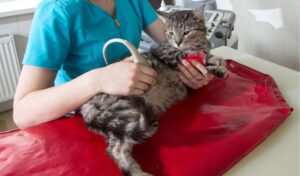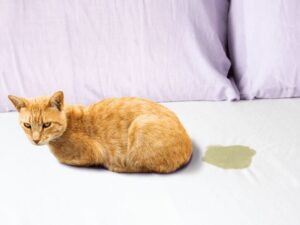Home Remedies for Cat Vomiting White Foam – Everything You Need to Know
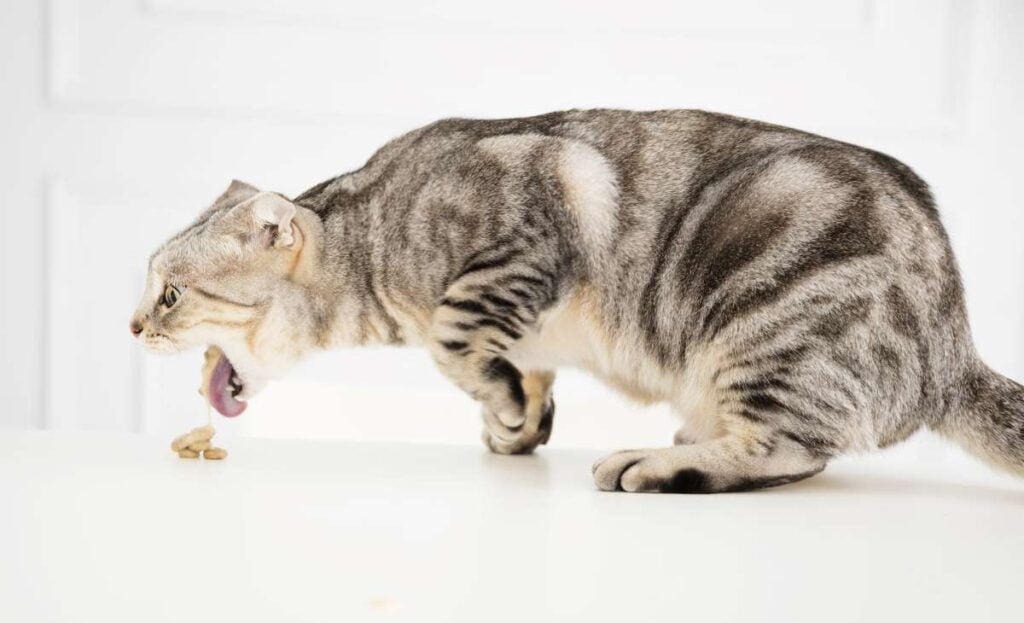
As cat owners, it’s natural for us to worry when our cats experience vomiting episodes. While occasional vomiting is considered normal for cats, it raises concerns when the vomit contains white foam. In this article, we will delve into the causes behind this issue and explore safe and effective home remedies for cat vomiting white foam.
- Why is Cat Vomiting White foam?
- What to do If Your Cat is Vomiting White foam?
- Home Remedies for Cat Vomiting White Foam
- Remedy 1: Fasting and gradual reintroduction of food
- Remedy 2: Offering small, frequent meals
- Remedy 3: Introducing a bland diet
- Remedy 4: Providing adequate water and electrolytes
- Remedy 5: Herbal remedies to soothe the stomach
- Remedy 6: Probiotics for gut health
- Remedy 7: Stress reduction and environmental adjustments
- Tips for Monitoring and Observing
Why is Cat Vomiting White foam?
Several factors can contribute to a cat vomiting white foam, ranging from benign to more serious issues. Identifying the cause can help in providing appropriate care and ensuring your cat’s well-being.
Factors causing cat vomiting white foam include:
- Hairballs: Ingested hair can accumulate in the stomach, leading to the expulsion of white foam through vomiting.
- Dietary Issues: Sudden diet changes, overeating, or consuming spoiled food may irritate the stomach and cause white foam vomiting.
- Indigestible Items: Cats may ingest plants or foreign objects that are indigestible, triggering vomiting.
- Underlying Health Issues: White foam vomit can be a symptom of gastritis, gastrointestinal inflammation, or infections.
- Stress and Anxiety: Emotional distress or environmental changes can lead to vomiting in cats.
What to do If Your Cat is Vomiting White foam?
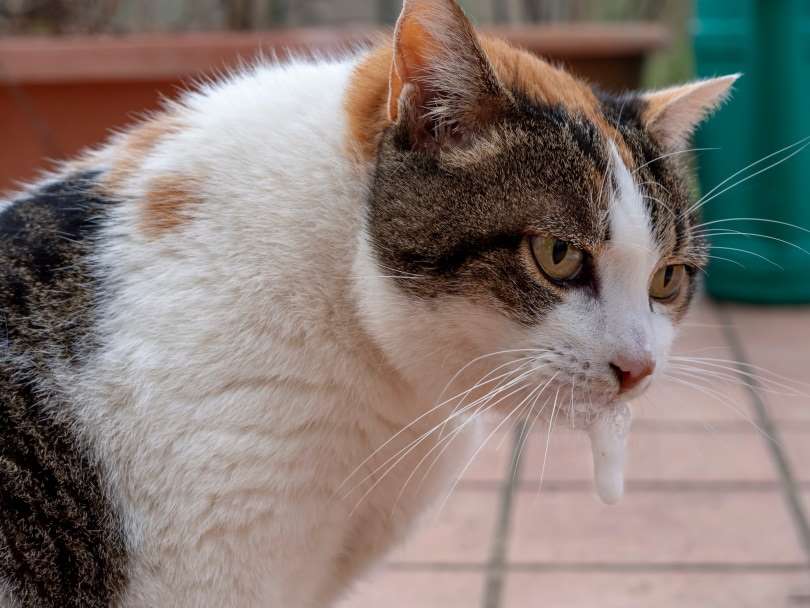
If your cat is vomiting white foam, it’s natural to be concerned about their health and well-being. While occasional vomiting may not be unusual for cats, persistent or frequent white foam vomiting could indicate an underlying issue that requires attention. Here’s what to do if your cat is experiencing this problem:
- Monitor Your Cat: Keep a close eye on your cat’s behavior and overall health. Note the frequency and severity of the vomiting episodes and any other accompanying symptoms.
- Withhold Food: Consider withholding food for a short period to give your cat’s stomach a chance to rest.
- Offer Water: Ensure your cat has access to fresh water at all times to prevent dehydration.
- Try Bland Diet: After fasting, gradually reintroduce a bland diet, such as boiled chicken or rice, to soothe the stomach.
- Observe for Improvements: Monitor how your cat responds to the fasting and the bland diet.
- Consult a Veterinarian: If the vomiting persists, worsens, or is accompanied by other concerning symptoms, seek veterinary attention promptly. A veterinarian can diagnose the underlying cause and provide appropriate treatment for your furry companion.
Remember, your cat’s health is a priority, and seeking professional veterinary advice is essential for an accurate diagnosis and appropriate care.
Home Remedies for Cat Vomiting White Foam
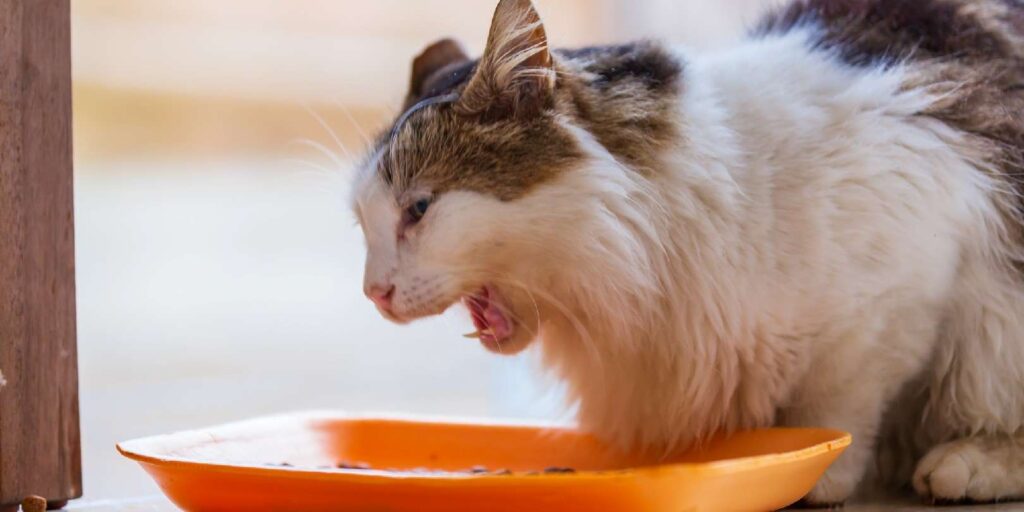
Here are some of the Home Remedies for Cat Vomiting White Foam. These are proven and tried methods and will hopefully work on your cat too! However, do note that if your cat’s condition is serious and it’s been vomiting continuously for the past 24 hours than these will do little to help your poor pet. Therefore, it’s best that you visit a veterinarian and seek immediate medical care for your cat.
Remedy 1: Fasting and gradual reintroduction of food
Fasting can be a beneficial approach to allow your cat’s upset stomach to settle and alleviate the irritation causing the white foam vomiting. By withholding food for 12 to 24 hours, the gastrointestinal tract can have time to rest and recuperate. During this fasting period, make sure to provide your cat with access to fresh water to prevent dehydration.
After the fasting period, it’s crucial to reintroduce food gradually to avoid overwhelming the stomach. Start by offering small portions of a bland diet that consists of easily digestible foods. Boiled chicken or plain cooked rice are excellent options for a gentle reintroduction of nourishment. By providing these easily digestible foods, you reduce the likelihood of additional irritation while allowing your cat’s system to recover gradually.
Remedy 2: Offering small, frequent meals
Feeding your cat small, frequent meals can be a helpful strategy to address white foam vomiting and promote better digestion. Instead of providing large meals, breaking down your cat’s daily food intake into several smaller portions can prevent overeating and reduce the likelihood of vomiting episodes.
Many pet owners prefer buying an automatic cat feeder for such purposes as it facilitates both you and your cat.
By offering gentle and nutritious cat-friendly foods in these smaller portions, you give your cat’s stomach the opportunity to handle the digestion process more efficiently. Choose high-quality cat food that is easy to digest and free from potential allergens or irritants.
Additionally, consider investing in puzzle feeders or interactive feeding toys that dispense small amounts of food at a time. These enrichment tools stimulate your cat’s natural hunting instincts and provide mental stimulation during mealtime.
Remedy 3: Introducing a bland diet
Introducing a bland diet can be a soothing solution to address white foam vomiting in cats. Prepare the diet using easily digestible ingredients such as boiled chicken or plain cooked rice.
These gentle foods can help alleviate stomach irritation and promote better digestion. The simplicity of a bland diet reduces the chances of triggering further vomiting, giving your cat’s gastrointestinal system a chance to heal.
Monitor your cat’s response to the bland diet and seek professional veterinary advice if the vomiting persists or if there are any concerning changes in your cat’s health.
Remedy 4: Providing adequate water and electrolytes
Proper hydration is crucial for addressing white foam vomiting in cats. Ensure your furry companion has access to fresh water at all times. Cats can be finicky drinkers, so offering multiple water sources and clean bowls may encourage them to stay hydrated.
In cases of dehydration, which can exacerbate vomiting, consider providing electrolyte solutions specifically designed for cats. These solutions help restore essential minerals and salts that may be lost through vomiting.
By ensuring adequate water intake and offering electrolyte support when needed, you can help your cat stay hydrated and aid in the recovery from white foam vomiting.
Remedy 5: Herbal remedies to soothe the stomach
Cat-safe herbs like chamomile or peppermint can offer soothing benefits to a cat’s upset stomach. These herbs have natural calming properties that may help ease digestive discomfort and reduce the frequency of vomiting.
However, we will recommend that it’s crucial to consult with your veterinarian before using any herbal remedies for your cat. Not all herbs are safe for feline consumption, and the proper dosage is essential to avoid any potential adverse effects.
Remedy 6: Probiotics for gut health
Introducing probiotic supplements to your cat’s diet can be beneficial for maintaining a healthy gut flora, which plays a vital role in digestion. Probiotics contain beneficial live bacteria that support the balance of gut microorganisms, aiding in the breakdown and absorption of nutrients. By promoting a healthy gut environment, probiotics can help reduce gastrointestinal issues, including vomiting episodes.
However, once again, it is essential to consult with your veterinarian before adding any supplements to your cat’s diet. Your vet can recommend the right probiotic product and dosage, tailored to your cat’s specific needs, ensuring optimal digestive health and overall well-being.
Remedy 7: Stress reduction and environmental adjustments
Identifying and addressing stress triggers in your cat’s environment can significantly contribute to reducing white foam vomiting. Cats are sensitive creatures, and environmental stressors can lead to gastrointestinal issues, including vomiting. Take the time to observe your cat’s behavior and look for potential stress triggers, such as loud noises, changes in routine, or the presence of other pets.
Make necessary adjustments to create a calm and comfortable atmosphere for your feline companion. We recommend buying a calming pheromone spray for such situations. Not only will it calm your cat but also alleviate anxiety. Additionally, provide cozy hiding spots, interactive toys, and scratching posts to alleviate stress and boredom.
Maintaining a consistent daily routine can also offer a sense of security and stability for your cat.
By minimizing stress and making positive changes in your cat’s environment, you can promote their overall well-being and reduce the likelihood of vomiting episodes. Remember, a stress-free environment plays a vital role in your cat’s health and happiness.
Tips for Monitoring and Observing
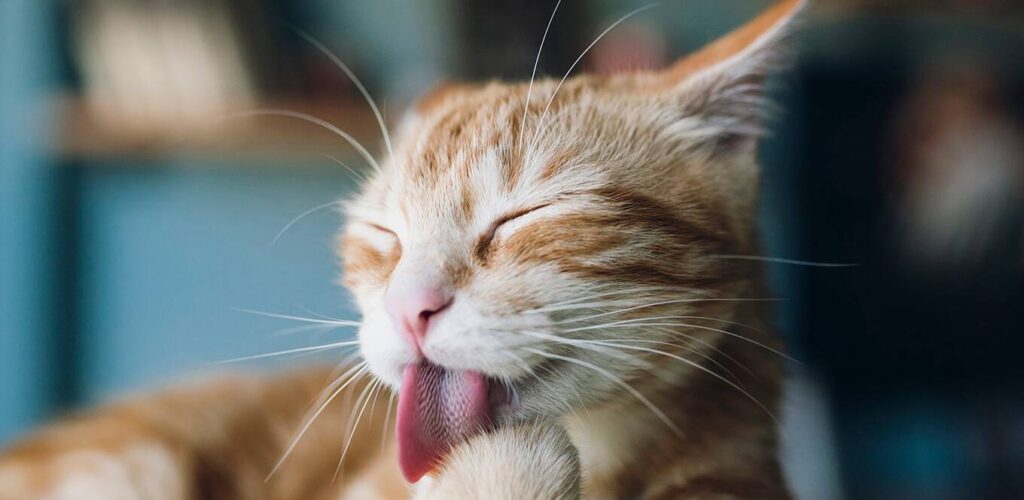
Keeping a close eye on your cat’s health and behavior can provide valuable information to address white foam vomiting effectively. Here are essential tips for monitoring and observing your feline companion:
- Track Vomiting Episodes: Note down the frequency and severity of vomiting episodes. This record can help you identify any patterns or changes over time.
- Provide a Stress-Free Environment: Cats can be sensitive to stress and environmental changes, which may contribute to vomiting. Create a calming atmosphere by offering cozy hiding spots, interactive toys, and a consistent daily routine.
- Monitor Appetite: Keep an eye on your cat’s eating habits. A sudden loss of appetite or reluctance to eat may signal a health problem.
- Stimulate Mental Engagement: Engage your cat in mentally stimulating activities and playtime to alleviate stress and boredom.
- Note Additional Symptoms: Be vigilant about any other symptoms your cat may exhibit, such as diarrhea, excessive thirst, or changes in litter box habits. These can provide valuable insights into the cause of the vomiting.
- Regular Brushing: Regularly brush your cat’s coat to reduce the formation of hairballs, which can lead to vomiting.
By monitoring your cat’s progress and being attentive to any changes, you can better understand your cat’s health and take proactive steps to ensure their well-being. Remember, your cat’s health is a priority, and seeking professional veterinary assistance when needed is essential for proper diagnosis and care.
